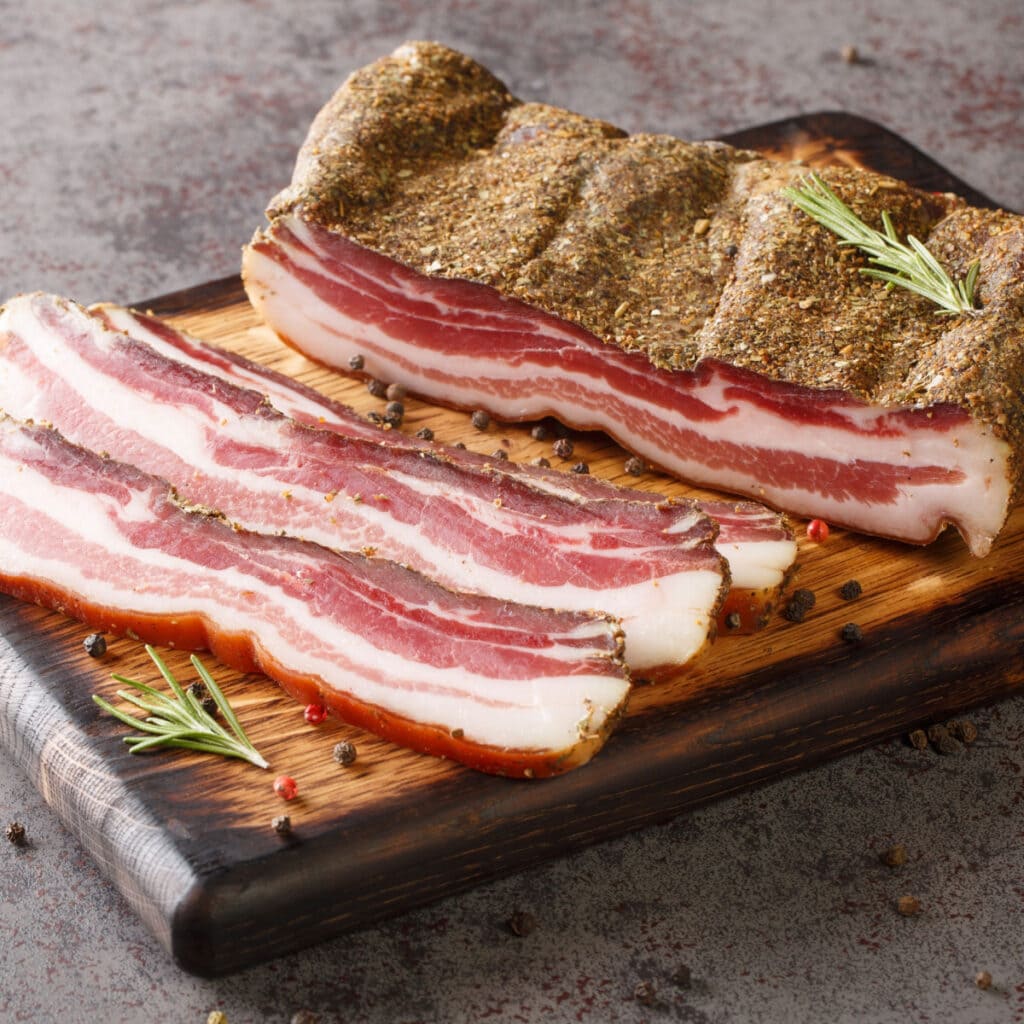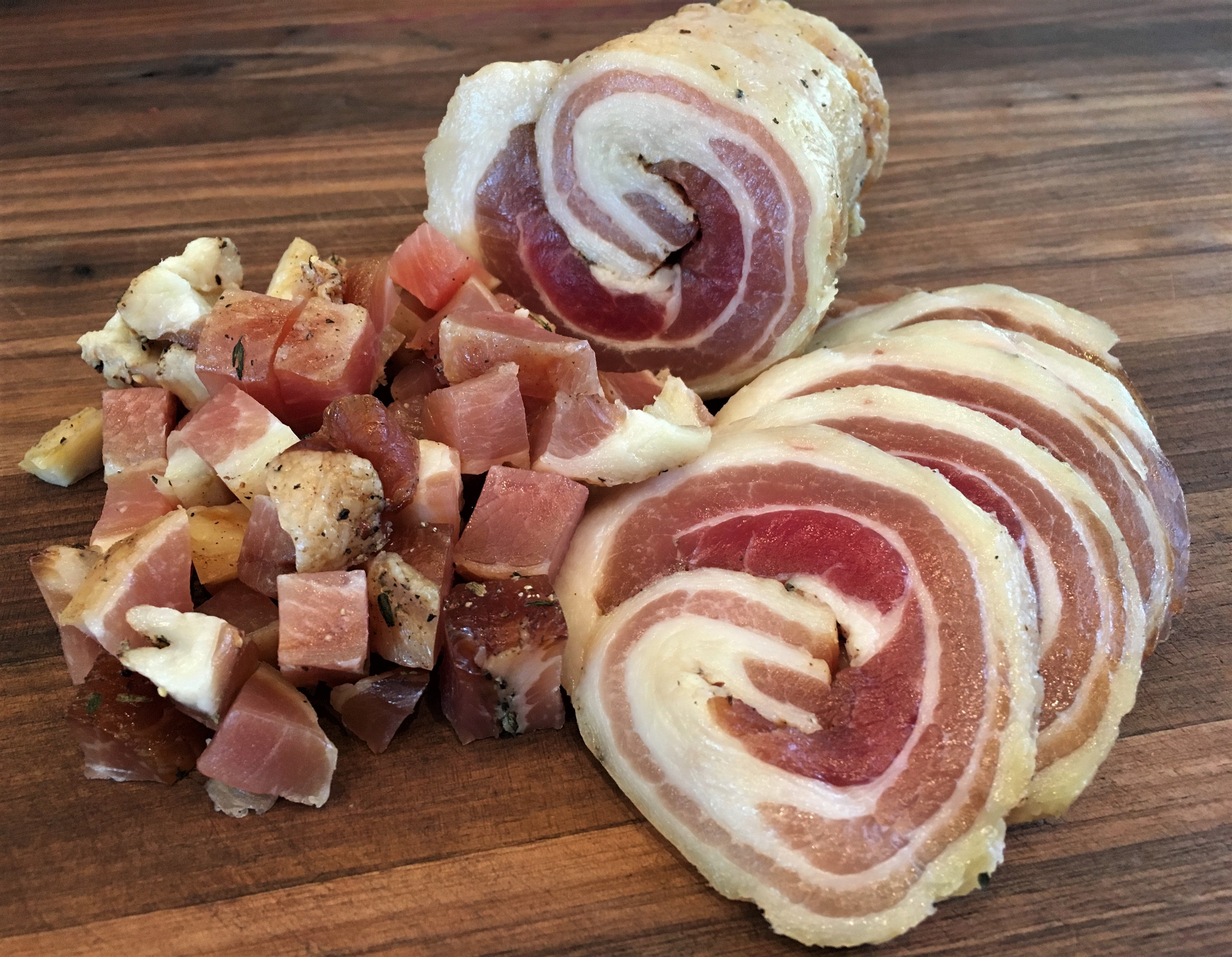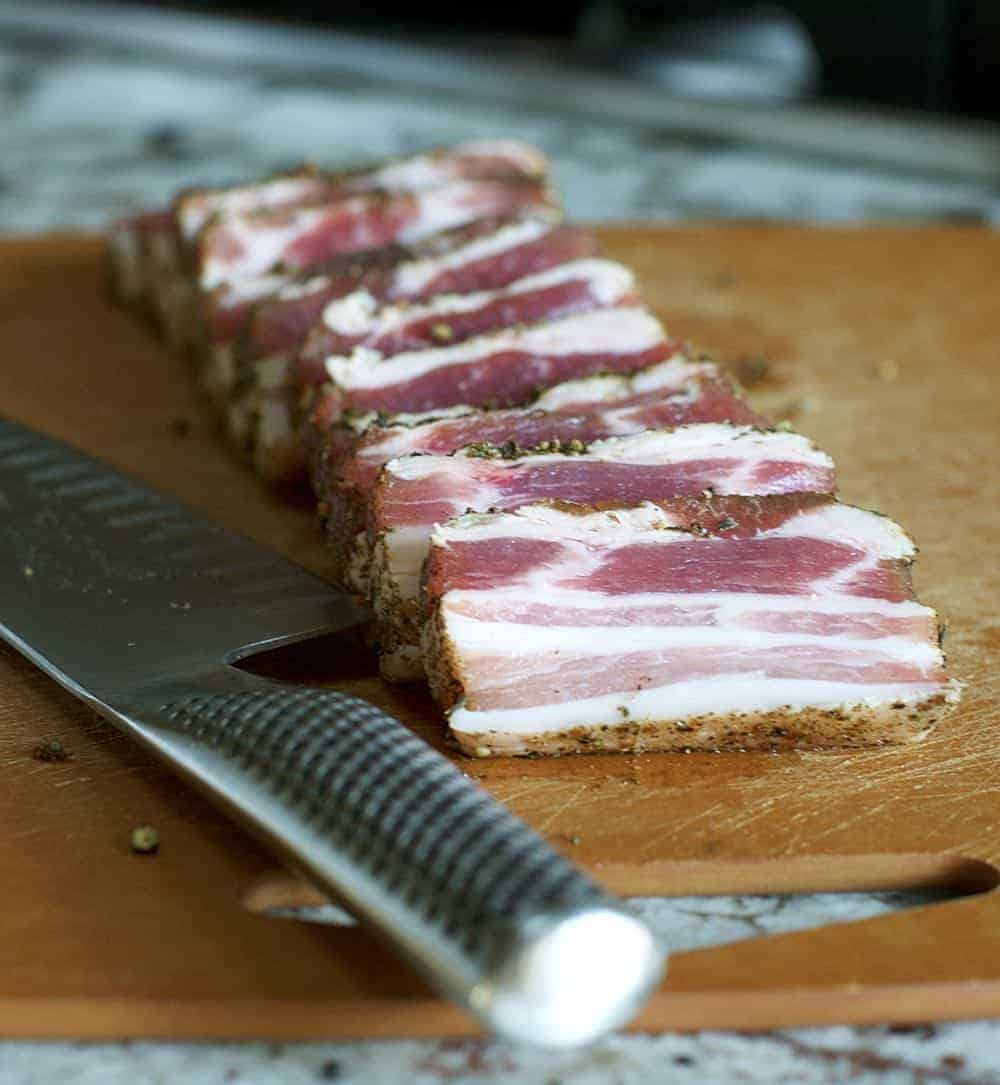Have you ever stood in the grocery aisle, looking at different cured meats, feeling just a little bit confused? Perhaps you’ve heard about pancetta, this wonderful Italian specialty, but you’re not quite sure what it is or, say, where to find it. Well, if you’re wondering about pancetta kroger, you’re in a good spot. This Italian cured pork belly is really something special, and it adds so much flavor to your cooking.
It’s very easy to mix up pancetta with other cured pork items, like bacon or prosciutto. Honestly, these three pork products look a bit alike, taste somewhat similar, and get swapped for each other quite often. It’s no wonder we get them confused, is that right? But pancetta, an Italian variety of cured meat, is popular all over the world for some very good reasons.
This article will look at precisely what pancetta is, how it’s made, and most importantly, how you can use it to make your meals taste amazing. We'll also help you find it easily when you are doing your shopping, especially at Kroger. So, you know, get ready to add a fantastic new ingredient to your kitchen, as a matter of fact.
Table of Contents
- What Exactly is Pancetta?
- Pancetta Versus Bacon: What's the Real Difference?
- How Pancetta Gets Made
- The Flavor Power of Pancetta in Your Kitchen
- Finding Pancetta at Kroger
- Tips for Buying and Storing Pancetta
- Nutritional Bits About Pancetta
- Delicious Ways to Use Pancetta
- Frequently Asked Questions About Pancetta
What Exactly is Pancetta?
Pancetta is, quite simply, Italian bacon. It comes from pork belly meat, and it’s cured, meaning it's preserved, but it's not smoked. This makes it a bit different from the bacon you might usually buy, which is often smoked. It’s a real star when added to recipes, giving a deep, rich taste that you just can’t get from other things, you know?
This cured meat has become increasingly popular in kitchens everywhere as a flavorful bacon alternative. In Italy, it is often used to add depth to soups and pasta dishes. It's a truly versatile ingredient, honestly, and can be eaten both uncooked and cooked, depending on the type and how it's prepared.
You might find it rolled up, which is called 'arrotolata,' or flat, known as 'tesa.' Both kinds come from the same part of the pig, the belly, but the way they are shaped changes how they are usually sliced and used. This gives you options, which is pretty neat, actually.
Pancetta Versus Bacon: What's the Real Difference?
So, you’re probably wondering, what truly sets pancetta apart from bacon? They are, like, very similar in many ways, but there are some key things that make them distinct. The biggest difference is usually the smoking process. Bacon, especially in North America, is almost always smoked, which gives it that familiar smoky taste and smell. Pancetta, on the other hand, is cured with salt, pepper, and sometimes other spices, but it’s typically air-dried, not smoked.
This lack of smoke means pancetta has a cleaner, more pork-forward taste. It’s a bit milder in some ways, but also incredibly rich and savory. When you cook it, it gets wonderfully crispy and renders out a delicious fat that’s perfect for cooking other ingredients in. Bacon, when cooked, tends to be a bit more intense with its smoky notes, so, you know, they really do have different roles in a dish.
Another thing is the cut. While both come from pork belly, pancetta is often cut into small cubes or thin strips for cooking. Bacon, as you know, usually comes in those longer, thinner slices. These three pork products, pancetta, bacon, and prosciutto, look alike, taste somewhat similar, and even get regularly substituted for each other. It’s no wonder we get them confused, is that right? But knowing the subtle differences helps you pick the right one for your recipe, which is pretty cool.
How Pancetta Gets Made
The process of making pancetta is quite interesting, and it’s really a traditional craft. It starts with the freshest, and best quality pork belly that you can find. This is the most important criteria, as a matter of fact. The pork belly is rubbed with a mix of salt, pepper, and sometimes other spices like nutmeg, cloves, or bay leaves. This curing mix helps to preserve the meat and develop its flavor. It's not a quick process, but it's worth the wait.
After being rubbed, the pork belly is typically rolled tightly, if it's going to be the 'arrotolata' kind, or left flat for 'tesa.' Then, it hangs to air-dry and age for a period, which can be anywhere from a few weeks to several months. This drying time is where the magic happens, honestly, as the flavors deepen and the texture becomes just right. Most of the work is actually done by time and the air, so, you know, it’s a bit like nature doing its thing.
This homemade pancetta recipe is incredibly easy to make, if you ever wanted to try it yourself. But for most of us, buying it ready-made is the way to go. The curing process means it’s safe to eat even uncooked, especially the very thinly sliced kind, which is pretty neat, you know, for things like charcuterie boards.
The Flavor Power of Pancetta in Your Kitchen
Pancetta adds depth of flavor to all kinds of dishes. It's a truly versatile ingredient that can elevate simple meals to something really special. When you render it, meaning you cook it slowly until its fat melts and it gets crispy, that fat becomes a base for so many other ingredients. It's like building a foundation of flavor for your whole dish, honestly.
Thin strips make excellent wrappers for roasts and hors d'oeuvres. Imagine wrapping some asparagus or scallops in a bit of pancetta before roasting them; the flavor combination is just amazing. It’s a real star when added to recipes like pasta, quiches, and casseroles. It gives a savory, slightly salty kick that makes everything taste richer, basically.
From pasta to quiche to shrimp, this cured meat adds so much flavor and depth to dishes. These easy pancetta recipes will take dinner up a notch, that's for sure. It’s a bit like a secret ingredient that makes people wonder what makes your food so good, you know?
Finding Pancetta at Kroger
So, you’re ready to get some pancetta and try it out, but where do you look for pancetta kroger? Good news! Kroger, being one of the biggest grocery chains, usually carries it. You’ll typically find pancetta in a few different spots within the store, so, you know, it’s good to know where to check.
Your first stop should probably be the deli section, or the specialty cheese and cured meats area. This is where you’ll often find pre-packaged cubes or thin slices of pancetta, usually near the prosciutto or other gourmet deli meats. It might be labeled as "diced pancetta" or "pancetta slices," so, you know, keep an eye out for those words.
Sometimes, it can also be found in the refrigerated meat section, often near the bacon or other specialty pork products. If you’re having trouble, don't hesitate to ask a store associate. They are usually very helpful and can point you right to it. It’s pretty common now, so most Krogers should have it readily available, which is very convenient, actually.
Just remember that inventory can vary slightly from store to store, so if your usual Kroger doesn't have it, another location nearby might. It's usually worth a quick check online on the Kroger website for your specific store's inventory before you go, just to be sure, you know, and save yourself a trip, as a matter of fact.
Tips for Buying and Storing Pancetta
When you’re picking out your pancetta at Kroger, or any store, you want to make sure you’re getting good quality. Look for packages that are well-sealed and show no signs of tearing or damage. The color of the meat should be a nice, consistent pinkish-red, with white fat marbled throughout. Avoid anything that looks discolored or has an off smell, obviously.
Once you get your pancetta home, proper storage is key to keeping it fresh and delicious. If it's still in its original, unopened vacuum-sealed package, you can keep it in the refrigerator until the "use by" date. This is usually several weeks, so, you know, it lasts a bit.
After you open the package, it's best to use the pancetta within a few days, typically three to five days. To keep it fresh once opened, wrap it tightly in plastic wrap or aluminum foil, or put it in an airtight container. You can also freeze pancetta for longer storage, which is pretty handy. Just wrap it well to prevent freezer burn, and it should keep for a few months. When you want to use it, just thaw it in the refrigerator overnight, which is very easy, actually.
Nutritional Bits About Pancetta
Like most cured meats, pancetta is quite flavorful, and it does have a good amount of fat and sodium. This article looks at precisely what pancetta is, how it’s made, its nutritional values, and how to use it. A small serving, say a tablespoon or two of diced pancetta, can add a lot of taste without adding too much to your overall intake, so, you know, a little goes a long way.
It's a good source of protein, which is always a plus. Because it's so rich in flavor, you often don't need a lot of it to make a dish sing. This means you can use it sparingly and still get that wonderful depth. It’s about using it as a flavor enhancer, rather than a main component of your meal, in some respects.
If you're watching your sodium intake, you might want to use it a bit more sparingly or balance it with other low-sodium ingredients in your recipe. But, honestly, for most people, using pancetta in moderation as a seasoning or flavor base is perfectly fine and delicious. It's really just a way to make food taste better, basically.
Delicious Ways to Use Pancetta
Pancetta is an incredibly versatile ingredient that can transform ordinary meals into something extraordinary. Its savory, rich flavor and crispy texture when cooked make it a favorite for many cooks. Here are some fantastic ways you can use pancetta in your kitchen, so, you know, get ready to get creative!
Pasta Dishes
This is arguably one of the most classic uses for pancetta. Think about a simple pasta carbonara. You render the pancetta until it's crispy, then toss it with hot pasta, eggs, Pecorino Romano cheese, and black pepper. The rendered fat coats the pasta, and the crispy bits add amazing texture. It's absolutely delicious, and very easy to make, honestly.
You can also add it to other pasta sauces, like a rich bolognese or a simple tomato sauce. Just dice it up, cook it until it's golden, and then build your sauce right in the same pan. The fat and the little browned bits, called fond, add incredible depth. It's a pretty simple trick, but it makes a huge difference, as a matter of fact.
Soups and Stews
In Italy, it is often used to add depth to soups and pasta. Start your minestrone or lentil soup by cooking diced pancetta until it's crispy. Remove the crispy bits, and then cook your onions, carrots, and celery in the rendered fat. This builds a flavor base that will make your soup taste so much richer. You can sprinkle the crispy pancetta back on top just before serving for a nice crunch, which is a really good touch, actually.
It works wonderfully in bean soups, potato soups, or even a hearty beef stew. The savory notes of the pancetta really complement the other ingredients, making the whole dish more satisfying. It’s like a little secret ingredient that makes everything taste better, you know?
Vegetable Sides
Elevate your vegetable side dishes with a bit of pancetta. Sauté some diced pancetta until it's crisp, then add green beans, Brussels sprouts, or even roasted potatoes to the pan. The vegetables will absorb that wonderful pancetta flavor and get a nice crispiness from cooking in the fat. It's a fantastic way to make vegetables more appealing, especially for those who might not be huge fans, so, you know, give it a try.
Imagine roasted asparagus wrapped in thin slices of pancetta. As the asparagus roasts, the pancetta gets crispy and imparts its salty, savory goodness to the tender spears. It’s a very elegant side dish that’s also incredibly simple to prepare, honestly.
Breakfast and Brunch
While bacon is the usual breakfast star, pancetta can absolutely shine too. Dice it and add it to scrambled eggs, frittatas, or quiches. It brings a different kind of savory note than bacon, a bit less smoky, which can be a nice change. It’s a real star when added to recipes like pasta, quiches, and casseroles, and that includes breakfast casseroles, as a matter of fact.
You can also crisp it up and serve it alongside pancakes or waffles for a sweet and savory combination. It’s a bit more gourmet than regular bacon, and it definitely adds a touch of sophistication to your morning meal, you know? It's pretty versatile, actually.
Roasts and Wraps
Thin strips make excellent wrappers for roasts and hors d'oeuvres. If you're roasting a chicken, pork loin, or even a fish fillet, wrapping it in pancetta can keep the meat moist and add a beautiful crust of flavor. The fat from the pancetta renders down, basting the meat as it cooks, which is pretty amazing.
For appetizers, you can wrap dates, shrimp, or even small pieces of fruit like melon in thin slices of pancetta and then bake or grill them. The salty pancetta with the sweet fruit or seafood is a classic combination that always impresses. These easy pancetta recipes will take dinner up a notch, and appetizers too, honestly.
Salads and Garnishes
Crispy pancetta bits make a fantastic addition to salads, adding both flavor and texture. Think about a warm spinach salad with a hot dressing made from the rendered pancetta fat, or a simple green salad topped with crunchy pancetta. It’s a great way to add a savory element to fresh greens, which is very appealing, actually.
You can also use it as a garnish for creamy soups, mashed potatoes, or even baked potatoes. Just a sprinkle of those crispy, salty bits can make a big difference in taste and presentation. It's a small touch that has a really big impact, you know?
Frequently Asked Questions About Pancetta
Is pancetta the same as bacon?
No, they are not exactly the same, though they are very similar and often confused. Both come from pork belly, but the main difference is how they are cured. Bacon is typically smoked after curing, which gives it a distinct smoky flavor. Pancetta, on the other hand, is usually cured with salt and spices and then air-dried, not smoked. This gives it a cleaner, more pork-forward, and savory taste, which is pretty important to know, actually.
What aisle is pancetta in at Kroger?
You will typically find pancetta in the deli section or the specialty cured meats area at Kroger. It's often pre-packaged in cubes or thin slices, near items like prosciutto or other gourmet cheeses. Sometimes, it might also be in the refrigerated meat section, close to the bacon. If you can't find it, just ask a store employee; they can usually point you in the right direction, which is very helpful, honestly.
How do you cook pancetta?
To cook pancetta, you usually dice it into small pieces or cut it into thin strips. Then, you cook it slowly in a pan over medium-low heat. This allows the fat to render out slowly, making the pancetta crispy and delicious. You don't usually need to add oil to the pan because the pancetta will release its own fat. Once it's crispy, you can remove the pancetta and use the flavorful rendered fat to cook other ingredients for your dish. It's pretty straightforward, actually, and makes a huge difference in flavor.



